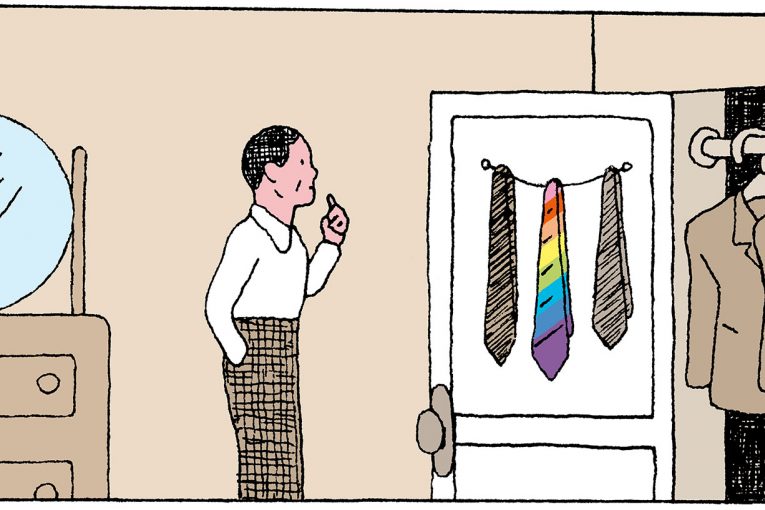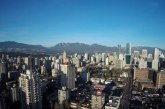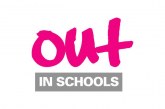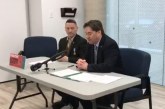
Fifty years ago, a gay activist met a Maclean’s journalist. Together, they helped start a revolution.
T here was a commotion by the library magazine rack. I assumed it must be about the Beatles—in February of ’64, Toronto’s Upper Canada College was abuzz with Beatlemania—but when I looked up, I saw an older boy I knew to be a smartass reading aloud to his pals from the latest issue of Maclean’s . Although I couldn’t make out what he was saying, one comment rose above the raucousness: “Men kissing— eeew , sick !” Eventually, a fifth former wearing a prefect’s tie came in and ejected the group. I waited until the room cleared before going to retrieve the offending magazine.
At thirteen, I was already a somewhat precocious Maclean’s reader, but here was an article unlike anything I had seen before. “The Homosexual Next Door,” by Sidney Katz, opened with a startling boldface subhead:
A million adult Canadians are homosexual. Some are “married” couples living quietly but well in suburban bungalows. Most of the others are ordinary citizens in all respects but the one that makes them criminals before the law and outcasts before society.
The article described a club for homosexuals, with over 700 members, that was flourishing on Toronto’s Yonge Street. Such a club operating openly, it noted, “underlines the rapidly changing nature of the homosexual problem.” The “problem” was that although Canadian homosexuals increasingly wished to live their lives in their own way, Section 149 of the Criminal Code made them outlaws. They were denied civil service jobs, private companies would often fire gay employees if their secret identities were discovered, landlords could refuse them housing, and most churches rejected their “wicked and evil” ways.
The wickedness of homosexuality had already been impressed upon me. To my parents, both devout evangelical Christians, the H-word described a terrible sin. “Homo” and “fairy” were ubiquitous schoolyard taunts in the 1950s and ’60s, even within the blazer-and-tie confines of an elite boys’ school such as UCC . A curious adolescent urban myth of the time held that Thursday was “Queer’s Day,” when anyone who wore green was automatically “queer” and ripe for teasing.
Read More Here: http://thewalrus.ca/outcasts/#DVP






